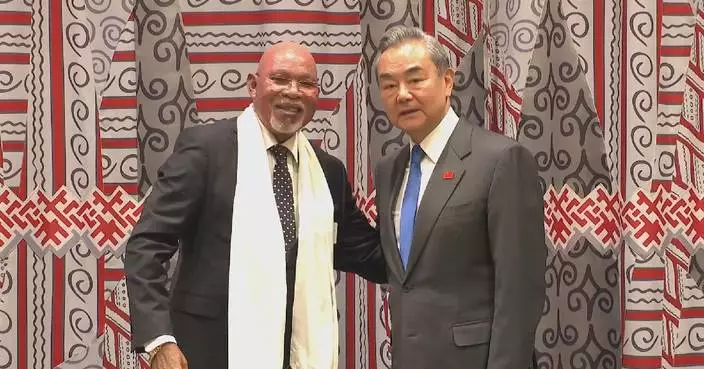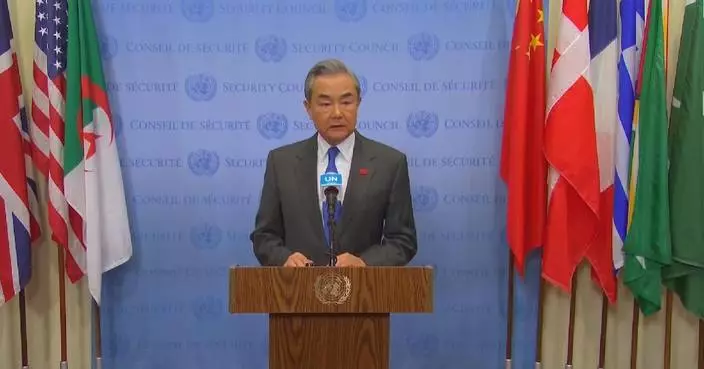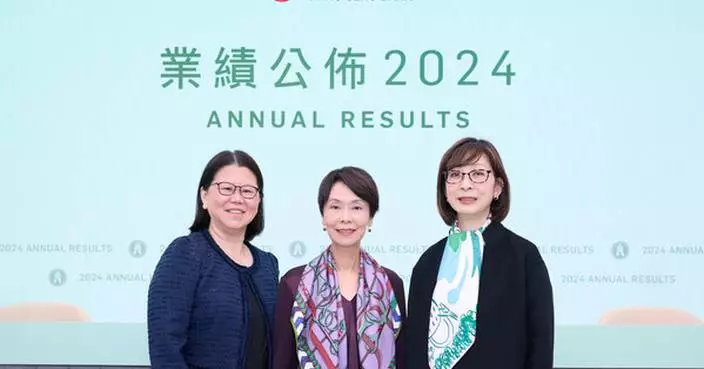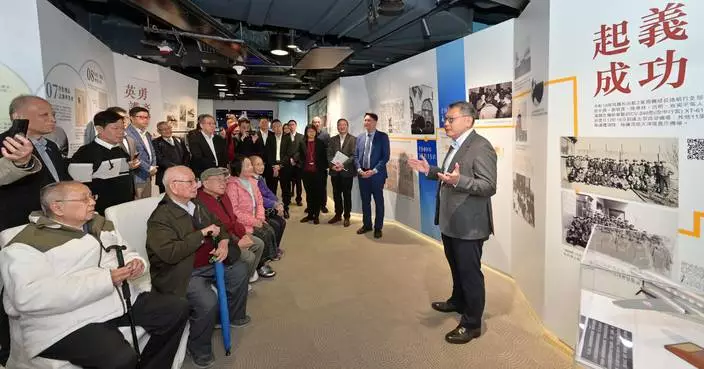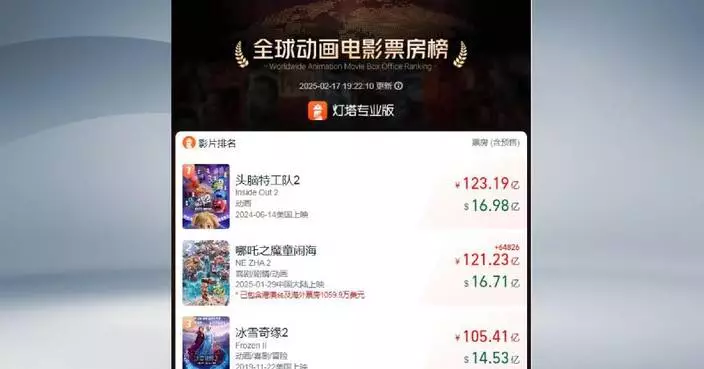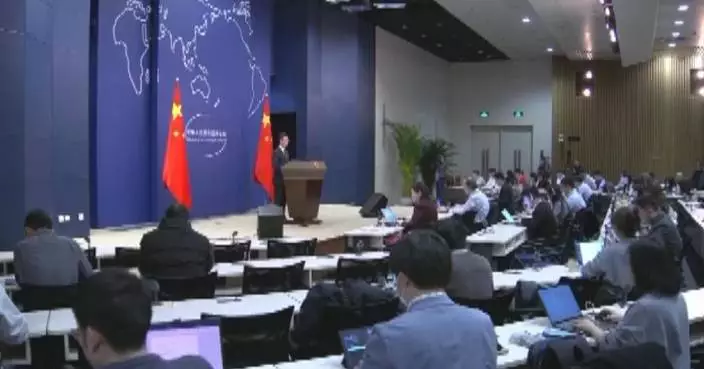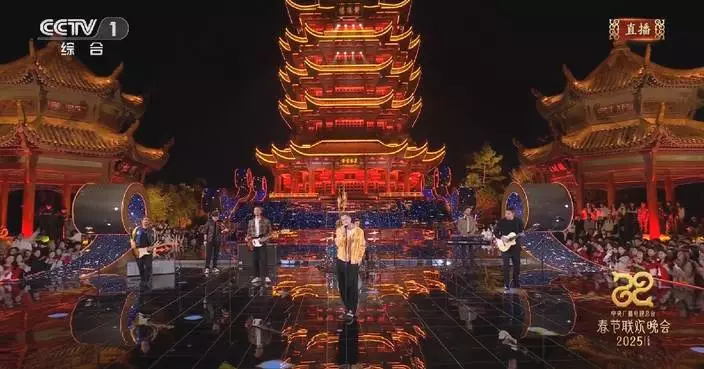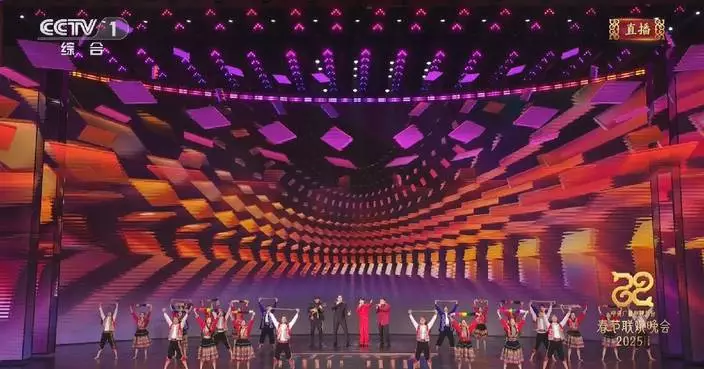Overseas Chinese around the globe from Kenya to Brazil and Republic of the Congo, along with locals, have tuned in for the Spring Festival Gala, an annual TV celebration produced and broadcast by the China Media Group (CMG) on Tuesday.
On New Year's Eve on Tuesday, a large crowd gathered at the most popular shopping mall in Kenya's capital Nairobi, watching the Spring Festival Gala broadcast on a big screen.
"The performance is very good, very interesting, very motivating. It's just good, very good. I love it," said Hector, a local after watching the show. "The Spring Festival Gala has now become a shared cultural experience and spiritual home for Chinese people worldwide. We are fortunate to be able to watch the live broadcast of the gala here. It helps us express our longing for our homeland and our families," said Ren Yuan, an overseas Chinese in Kenya.
In Brazil and Republic of the Congo, Chinese expatriates working on bilateral cooperation projects celebrated the Spring Festival by watching the gala.
"This is my first time spending the New Year abroad. We were able to watch the Gala broadcast live and shared the experience with our Brazilian friends. It was very exciting. Tonight’s show was very rich, and it brought our local friends to cheer along with us," said Yang Minli, a professor from China Agricultural University now participating in the China-Brazil agricultural mechanization cooperation project.
"The Spring Festival Gala is a splendid show. Although it was my first time watching, I found it very captivating throughout," said a Brazilian local.
"Every year during the Spring Festival, we organize all our staff to participate in various cultural and sports activities and watch the Spring Festival Gala. It creates a sense of home for everyone," said Li Xingtao, a Chinese staff working on a project under the Belt and Road Initiative in the Republic of the Congo.
The gala, also known as "Chunwan", was first broadcast in 1983 and is seen as a major cultural symbol for Spring Festival celebrations in China.
Recognized by the Guinness World Records as the world's most-watched annual TV program, the hours-long television extravaganza attracts over a billion views every year.

CMG Spring Festival Gala expands overseas exposure
The top six archaeological findings across China in 2024 were announced at Wednesday's annual archaeology forum hosted by the Chinese Academy of Social Sciences.
The discoveries, covering from the Paleolithic Age to the Yuan (1271-1368), Ming (1368-1644), and Qing Dynasties (1636-1912), shed light on studies on the history and culture of ancient China.
The earliest of the six, the Dadong Site, is located in Jilin Province in northeast China. Discovered in the strata dating from 28,000 to 24,000 years ago, the site involves an artificial stone circle, which should be the remains of a primary shed of ancient humans, implying the archaeological importance of the Changbai Mountain area in the field of evolutionary anthropology studies.
The Xiatang Site in east China's Zhejiang Province, a Neolithic Age settlement site, reveals the structure and layout of the ancient village, providing new evidence for the study of the social structure of early-stage agricultural societies.
At the Siwa Site, another Neolithic Age site in northwest China's Gansu Province, the first prehistory large-scale near square-shaped moat was discovered, which might hint at the origin of the square-walled cities in China.
The Zhouyuan Site in Shaanxi Province of northwest China shows evidence of China's earliest dynasties, providing written materials for studying the history of Western Zhou Dynasty (about 1046 – 771 BC). With over 200 bone and tortoise shell pieces for divination rites being found, phrases totaling over 180 oracle scripts were recognized, covering documentations of astronomy, calendar, history, and geology.
At a Warring States period site in east China's Anhui Province, the Wuwangdun Site, researchers excavated over 10,000 pieces of cultural relics, including multiple Ding sets, or special cauldron sets, the representative ritual vessels that have long been used to represent social class and nobility, and symbols of China's traditional rites and ethnicity.
In east China's Jiangxi Province, the archaeological site of Jingdezhen City, the world-famous town of porcelain with a thousand-year history, welcomed new discoveries. The latest discoveries at the Jingdezhen Site revealed the sources of materials and fuels that supported the large-scale porcelain production, as well as the local traffic net in the Yuan, Ming, and Qing Dynasties, giving people a perception to understand Jingdezhen's development history.
"These discoveries are not only about gathering ancient relics in the fields, but, more importantly, about their value for academic research. Every single result complements our understanding of Chinese history and culture," said Shi Jinsong, the deputy head of the Institute of Archaeology at the Chinese Academy of Social Science.

China unveils top archaeological findings of 2024
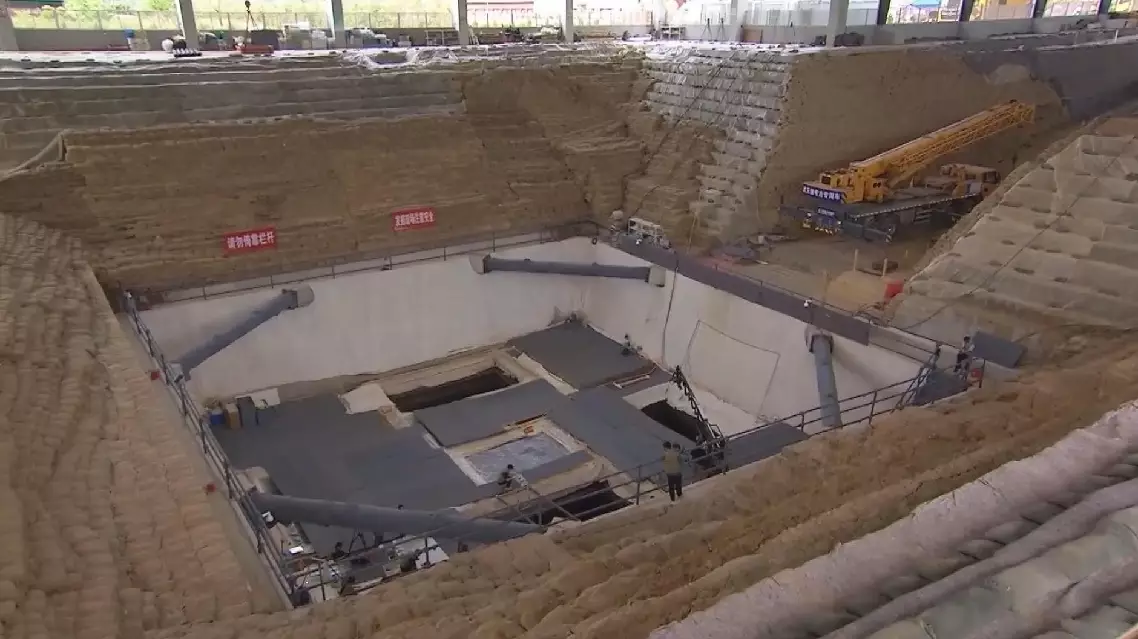
China unveils top archaeological findings of 2024











